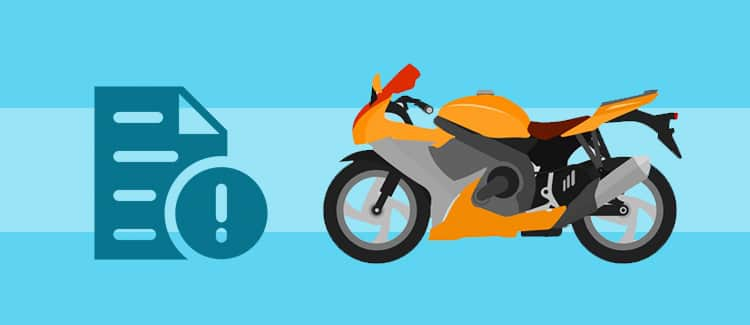Why Do E-bikes Catch Fire? Check Out 12 Tips to Prevent It
In recent days, a lot of electric bikes powered by lithium-ion batteries have caught fire across India leading to major damage and burn injuries. These fire incidents have prompted the government to investigate the matter and take appropriate measures for everyone’s safety. To know more about how electrical two-wheelers work and their safety issues, read the below article.
How Does an Electric Vehicle Work?
Electric vehicles (EVs) run on electricity powered by lithium-ion batteries. These batteries are light in weight and efficient working devices. The major characteristic of a li-ion battery is that it is a source of renewable energy sources.
A lithium-ion (Li-ion) battery is a common and popular battery type used in every EV. It has an anode, cathode, electrolyte, separator, and two current collectors. The lithium of the battery is stored in an anode and cathode. With the help of a separator, the electrolyte takes positively charged lithium ions from the anode to the cathode and vice versa.
Li-ion batteries also have a longer lifespan in comparison to any lead-acid battery. It stores around 150-watts per hour per kg of energy, which is more than a lead-acid battery. Therefore, they are more efficient and can deliver an enhanced driving range in EVs.
However, many recent cases have proven that lithium-ion batteries pose a fire risk. These batteries are high-energy-density devices. It can be one of the biggest reasons behind the battery malfunction.
Understanding the Importance of Battery Management System
A high energy density device refers to a device with high-powered cells that can become unstable at certain times, hindering functionality. That is why a li-ion battery has a battery management system (BMS) to make it safe.
A battery management system is an electronic device that constantly measures the voltage and the current flow in a li-ion battery pack. A BMS consists of a myriad of temperature sensors that provides information about the temperatures at different sections of the battery pack.
Why Do E-bikes Catch Fire So Easily?
Li-ion batteries contain two electrodes and an electrolyte fluid running in between them. The electrolyte fluid is a highly flammable substance that can cause a fire if the battery is damaged or overheated. When the battery is overcharged or overheated, the fluid running between the two electrodes can explode due to the heat and pressure.
Another reason for the e-bike fires is the low-quality components. Hence, the products used in making the components should be certified by the testing laboratory.
12 Tips to Prevent E-bike Fires
With a rising number of fire accidents in e-bikes or e-scooters, there are some fire safety measures associated with li-ion batteries charging and storage. Besides buying an e-bike from a reputed brand that uses certified high-quality components, here are some tips that you can follow to prevent e-bike fires-
1. Register your e-bike with the manufacturer for warranties. The batteries of the e-bike play a vital role in the fire and registration is essential for a replacement by the manufacturer.
2. Read the user manual and adhere to all the precautions.
3. Always use the manufacturer's charging cords and adapters given for your e-bike.
4. Avoid using power extensions. Use a charger directly into the main switch.
5. Install a smoke detector in your dedicated charging area.
6. In case your e-bike's battery or the e-bike itself gets wet in the rain, consider it permanently damaged and do not charge it. You can also get it tested by your manufacturer responsibly.
7. Avoid keeping old li-ion batteries inside your home. Instead, recycle them carefully.
8. Never leave your e-bike charging overnight or leave it unattended while charging.
9. In a public place, charge your bike from government authorised charging station.
10. Avoid parking your e-bikes in direct sunlight. The best place to park your e-bike is in a shaded spot or underground parking.
11. Do not establish your charging area near combustible or flammable contents.
12. Never cover your battery packs or even a charger while charging as this could lead to a fire.
Do not forget to opt for a comprehensive e-bike insurance policy to get compensation for fire damages. Moreover, any fire damage to the e-bike outside the location mentioned in the e-bike insurance policy is not covered. Therefore, read your policy wording carefully before buying it.
What to Do if Your E-bike Catches Fire?
Supervising your e-bike’s battery can help you in detecting signs of danger before the battery actually catches fire. Always check your battery regularly for signs like- a strange flammable smell, a leaking sound, an odd noise, change in the battery shape. It is advised to keep it away from any flammable substances.
If your e-bike catches fire, do not panic. Instead, evacuate the nearby area immediately and give a call to the fire brigade emergency service. Also, report the incident to the nearby police station and call your insurer as early as possible. Your insurer will compensate for the damages caused to your e-bike under your e-bike insurance policy.
Summarising
The recent e-bike fires have made people hesitant of using them. However, you can enjoy and ride your electric two-wheeler safely if you adhere to all the above-mentioned tips while using it. Moreover, buy an e-bike insurance policy online according to your need and budget for extensive financial protection.
^The renewal of insurance policy is subject to our operations not being impacted by a system failure or force majeure event or for reasons beyond our control. Actual time for a transaction may vary subject to additional data requirements and operational processes.
^The buying of Insurance policy is subject to our operations not being impacted by a system failure or force majeure event or for reasons beyond our control. Actual time for transaction may vary subject to additional data requirements and operational processes.
#Savings are based on the comparison between highest and the lowest premium for own damage cover (excluding add-on covers) provided by different insurance companies for the same vehicle with the same IDV and same NCB.
*TP price for less than 75 CC two-wheelers. All savings are provided by insurers as per IRDAI-approved insurance plan. Standard T&C apply.
*Rs 538/- per annum is the price for third party motor insurance for two wheelers of not more than 75cc (non-commercial and non-electric)
#Savings are based on the comparison between the highest and the lowest premium for own damage cover (excluding add-on covers) provided by different insurance companies for the same vehicle with the same IDV and same NCB.
*₹ 1.5 is the Comprehensive premium for a 2015 TVS XL Super 70cc, MH02(Mumbai) RTO with an IDV of ₹5,895 and NCB at 50%.
*Rs 457/- per annum is the price for the third-party motor insurance for private electric two-wheelers of not more than 3KW (non-commercial).The list of insurers mentioned are arranged according to the alphabetical order of the names of insurers respectively.Policybazaar does not endorse, rate or recommend any particular insurer or insurance product offered by any insurer. The list of plans listed here comprise of insurance products offered by all the insurance partners of Policybazaar. For complete list of insurers in India refer to the Insurance Regulatory and Development Authority of India website www.irdai.gov.in





























